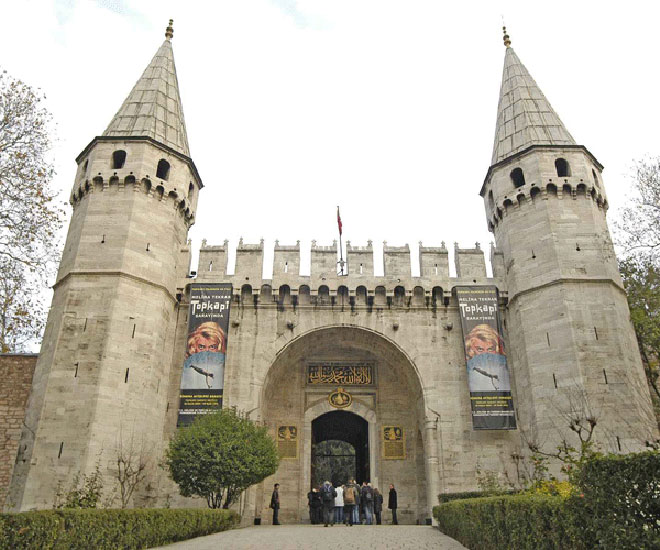THE TOPKAPI PALACE MUSEUM

Topkapi Palace was home to all the Ottoman sultans until the reign of Abdulmecid I (1839-1860), a period of nearly four centuries. The order for the construction of the Topkapi Palace on the Seraglio Point overlooking both Marmara and Bosphorus was given by Mehmed II after the conquest of Constantinapolis in 1453. The place was then an ancient olive grove. The final form of the first palace covered an area 700m², and was enclosed with fortified walls 1400 meters in length. The walls were pierced by a number of gates, namely the Otluk gate, the Demir gate and the Imperial gate (Bab-i Humayun), and a number of minor angled gates between them.
After the reign of Mehmed II the Conqueror, the palace grew steadily to form a city like complex of buildings and annexes, including a shore palace known as the Topkapi shore palace, as it was situated near the cannon gate -Topkapi- of the ancient walls of Istanbul. When the shore palace was burned down in 1863, it lent its name to the great complex we now know as Topkapi Palace. The main portal, the Bab-i Humayun, was suited next to the mosque of Ayasofya (Haghia Sophia Church), and this led a series of four courts surrounded by various structures.
The courts, chambers, pavilions and other sections can be viewed at the floor plan of Topkapi Palace. In this page, you can find pointers to the pictures of illuminated manuscript pages in the museum sections and pictures of sections illustrating the architecture of the palace. Please visit the pages at the left frame to get more information on the Palace and Museum. The museum director Prof. Ilber Ortayli writes in daily Milliyet once a week. Here are some of his articles: Divan-i Humayun, Harem, Enderun.